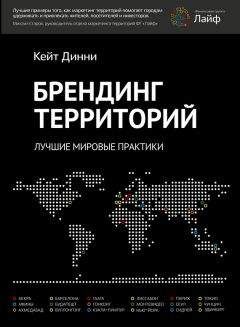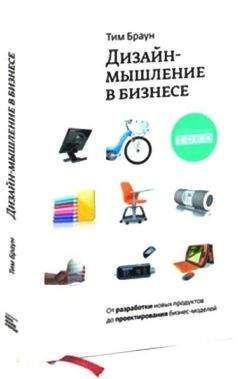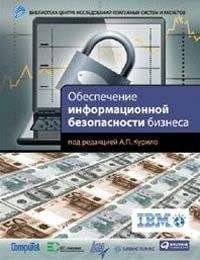36. Buchan Consulting (2003), Wollongong Economic Development Road Map, available at: http://www.wollongong.nsw.gov.au/documents/Wollongong_Economic_Development_Roadmap.pdf (accessed 15 May 2010).
37. Burgan, B. and Mules, Т. (1992), Economic impact of sporting events, Annals of Tourism Research, Vol. 19, No. 4, pp. 700–710.
38. Business Week (2009a), The Madrid region concentrated 82 % of foreign direct investment into Spain during 2008. Do you want to know why? 28 December, p. 23.
39. Business Week (2009b), Japan regional initiative – Food industry Saitama-Shizuoka: A mouthwatering opportunity, 28 December, p. 77.
40. Business Week (2009c), The Kyrgyz Republic looks ahead, 28 December; pp. 85–91.
41. Carn, J. and Servon, L. (2009), Vernacular culture and urban economic development: Thinking outside the (big) box, Journal of the American Planning Association, Vol. 75, No. I, pp. 28–40.
42. CEOs for Cities (2010), New York city’s $l9b green dividend, April 21, available at: http://www.ceosforcities.org/ (accessed 30 May 2010).
43. Chalip, L. and Costa, C.A. (2005), Sport event tourism and the destination brand: Towards a general theory, Sport in Society, Vol. 8, No. 2, pp. 218–237.
44. Chang, Т.С. (2000), Renaissance revisited: Singapore as a ‘Global City for the Arts’, International Journal of Urban and Regional Research, Vol. 24, No. 4, pp. 818–831.
45. Chesshyre, T. (2009), Copenhagen: Europe’s greenest city, The Times, 5 December; available at: http://www.timesonline.co.uk/tol/travel/holiday_type/green_travel/article6941259.ece (accessed 5 February 2010).
46. Chinese Academy of Social Sciences (2009), Blue Book of Cities in China, Urban Development and Environment Research Center; Beijing, China.
47. Choe, S.-H. (2010), In Seoul, green transit is mayor’s pet project, New York Times, 27 March.
48. Clark, G. (2007), Report to the Economic Development Committee, City of Toronto, a Presentation to The City of Toronto, January 24.
49. Cohen, E. (1988), Authenticity and commoditization in tourism, Annals of Tourism Research, Vol. 15, No. 3, pp. 371–386.
50. Commission on Strategic Development (2000), Bringing the vision to life: Hong Kong’s long-term development needs and goals, available at: http://wwwinfo.gov.hk/gia/general/200002/21/0221082.htm (accessed 12 January 2010).
51. Crandall, D., Backstrom, L., Huttenlochen, D. and Kleinberg, J. (2009), Mapping the world’s photos, Working Paper of the International World Wide Web Conference Committee, 20–24 April, Madrid, Spain, available at: http://www2009.eprints.org/77/1/р761.pdf (accessed 5 June 2010).
52. Cushman & Wakefield (2009), European Cities Monitor 2009, www.cushwake.com
53. Daily Express, East Malaysia (2009), Najib explains ‘One Malaysia’ concept, 3 April, available at: http://www.dailyexpress,com.my/news.cfm?NewslD=63970 (accessed 7 January 2010).
54. DBKL (2008), Research on creating various tourism products in Kuala Lumpur, prepared by the Consultation Unit of the University of Malaya for Kuala Lumpur City Hall.
55. De Carlo, M., Canali, S., Pritchard, A. and Morgan, N. (2009), Moving Milan towards Expo 2015: Designing culture into a city brand, Journal of Place Management and Development, Vol. 2, No. I, pp. 8–22.
56. de Chernatony, L. (1999), Brand management through narrowing the gap between brand identity and brand reputation, Journal of Marketing Management, Vol. 15, Nos 1–3, pp. 157–179.
57. de Chernatony, L. and Christodoulides, G. (2004), Taking the brand promise online: Challenges and opportunities, Interactive Marketing, Vol. 5, No. 3, pp. 238–251.
58. Delaney, K., and Eckstein, R. (2007), Urban power structures and publicly financed stadiums, Sociological Forum, Vol. 22, No. 3, pp. 331–353.
59. Delanty, G. (1998), Redefining political culture in Europe today: From ideology to the politics of identity and beyond, in Hedentoft, U. (ed.), Political Symbols, Symbolic Politics: European Identities in Transformation, Ashgate Publishing Company, Hampshire, United Kingdom, pp. 23–43.
60. Demos (2003), Manchester is favourite with the ‘new bohemians’, available at: http:// www.demos.co.uk/press_releases/bohobritain (accessed 10 January 2010).
61. Destination Edinburgh marketing alliance: A step change for Edinburgh, September 2009, DEMA (prepared on their behalf by Leithal Thinking), Available at: http://www.edinburgh-brand.com/PDF/DEMA%20General%20Presentation%20Decemberpdf (accessed 5 February 2010).
62. Devlin, J.F. and McKechnie, S. (2008), Consumer perceptions of brand architecture in financial services, European Journal of Marketing, Vol. 42, No. 5/6, pp. 654–666.
63. Dickinson, S. (2006), Urban regeneration: UK practice, in Diamond, J., Liddle, J., Southern, A. and Townsend, A. (eds), Managing the City, Routledge, United Kingdom, pp. 16–31.
64. Dinnie, K. (2008), Nation Branding – Concepts, Issues, Practice, Butterworth-Heinemann, Oxford, United Kingdom.
65. Dooley, G. and Bowie, D. (2005), Place brand architecture: Strategic management of the brand portfolio, Place Branding, Vol. 1, No. 4, pp. 402–419.
66. dottourism.com (2010), Case study – Monaco, available at: http://www.dottourism.com/case-study-monaco-tourism-email-marketing.php (accessed 5 January 2010).
67. Dutch Ministry of Foreign Affairs (2008), Be Our Guests: Policy Review on Hosting International Organisations in the Netherlands, No. 316, The Hague: Inspectie Ontwikkelingssamenwerking en Beleidsevaluatie.
68. Echtner, C.M, and Ritchie, J.R.B. (2003), The meaning and measurement of destination image: [Reprint of original article published in Vol. 2, No. 2, 1991: 2–12.], Journal of Tourism Studies, Vol. 14, No. I, pp. 37–48.
69. Economist (2009), Go north… or go south, 8 June, available at: http://www.economist.com/markets/rankings/displaystory.cfm?storyJd=EI_TPRDJSSD (accessed 5 February 2010).
70. Ecorys Research and Consulting (2008), The City and Region Success Carrier, available at: http://www.ecorys.com/news-items-press-releases/the-ecorys-approach-to-place-market-ing.html (accessed 2 May 2008).
71. Education Malaysia (2009), International student statistics, available at: http://educationmalaysia.gov.my/studentpass2008.php (accessed 27 January 2010).
72. Edvinsson, L. (2006), Aspects on the city as a knowledge tool, Journal of Knowledge Management, Vol. 10, No. 5, pp. 6–13.
73. Ernst & Young (2008), Baromed 2008, The Next European Frontien www.ey.com
74. Ernst & Young (2009), Globalization Index 2009, available at: http://www.ey.com/GL/en/lssues/Business-environment/Redrawing-the-map-globalization-and-the-changing-world-of-business – The-Globalization-lndex-2009 (accessed 2 June 2010).
75. Evans, G. (2003), Hard-branding the cultural city – From Prado to Prada, International Journal of Urban and Regional Research, Vol. 27, No. 2, pp. 417–440.
76. Finfacts (2008), Dublin fourth most expensive city of 71 global cites – Kuala Lumpur cheapest according to UBS report, available at: http://www.finfacts.com/irishfinancenews/article_1012932.shtml (accessed 21 January 2010).
77. Florek, M. and Conejo, F. (2007), Export flagships in branding small developing countries: The cases of Costa Rica and Moldova, Place Branding and Public Diplomacy, Vol. 3, No. I, pp. 53–72.
78. Florek, M., Insch, A. and Gnoth, J. (2006), City Council websites as a means of place brand identity communication, Place Branding, Vol. 2, No. 4, pp. 276–296.
79. Florida, R. (2003), The Rise of the Creative Class: And How It's Transforming Work, Leisure, Community and Everyday Life, Basic Books, New York, United States.
80. Florida, R. (2005), The Flight of the Creative Class: The New Global Competition for Talent, Harper Business, New York, United States.
81. Fola, M. (2007), The international image of Greece. An analysis on the occasion of the Athens 2004 Olympic Games, Hellenic Observatory 3rd PhD Symposium on Contemporary Greece, 14–15 June, available at: http://www.lse.ac.uk/collections/hellenicObservatory/pdf/3rd_Symposium/PAPERS/FOLA_MARIA.pdf (accessed 12 April 2010).
82. Forbes.com (2009), City blogs, available at: http://autos.forbes.com/bow/b2c/category.jhtml?id=23 (accessed 3 January 2010).
83. Foreign Policy (2009), The 2008 Global Cities Index, Nov./Dec., Issue I 69, pp. 68–76.
84. Fortune (2009), Jalisco – Mexico’s innovation capital, 21 December, p. 57.
85. Freire, J.R. (2005), Geo-branding, are we talking nonsense? A theoretical reflection on brands applied to places, Place Branding, Vol. 1, No. 4, pp. 347–362.
86. Freire, J. (2009), Local People a critical dimension for place brands, Journal of Brand Management, Vol. 16, No. 7, pp. 420–438.
87. Futurebuzz.com (2009), 49 amazing social media, Web 2.0 and Internet stats, available at: http://thefuturebuzz.eom/2009/01/12/social-media-web-20-internet-numbers-stats/ (accessed 10 January 2010).
88. Gaggiotti, H., Cheng, R.L.C. and Yunak, O. (2008), City brand management (CBM): The case of Khazakstan, Place Branding and Public Diplomacy, Vol. 4, No. 2, pp. 115–123.

![Rick Page - Make Winning a Habit [с таблицами]](https://cdn.my-library.info/books/no-image.jpg)


